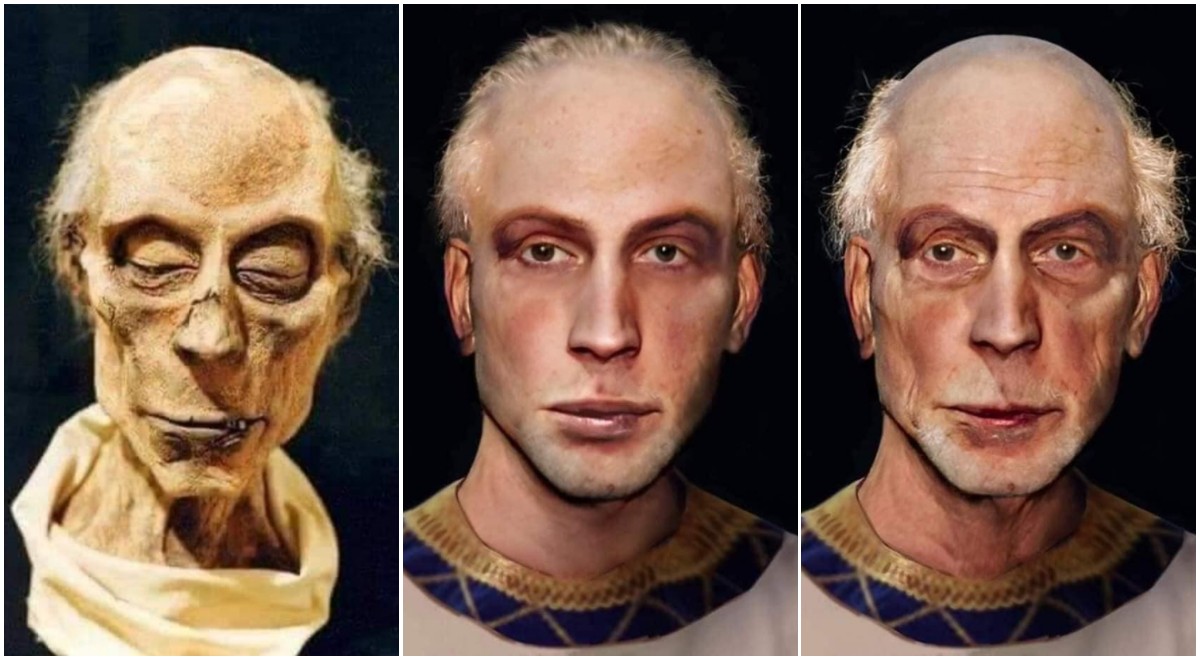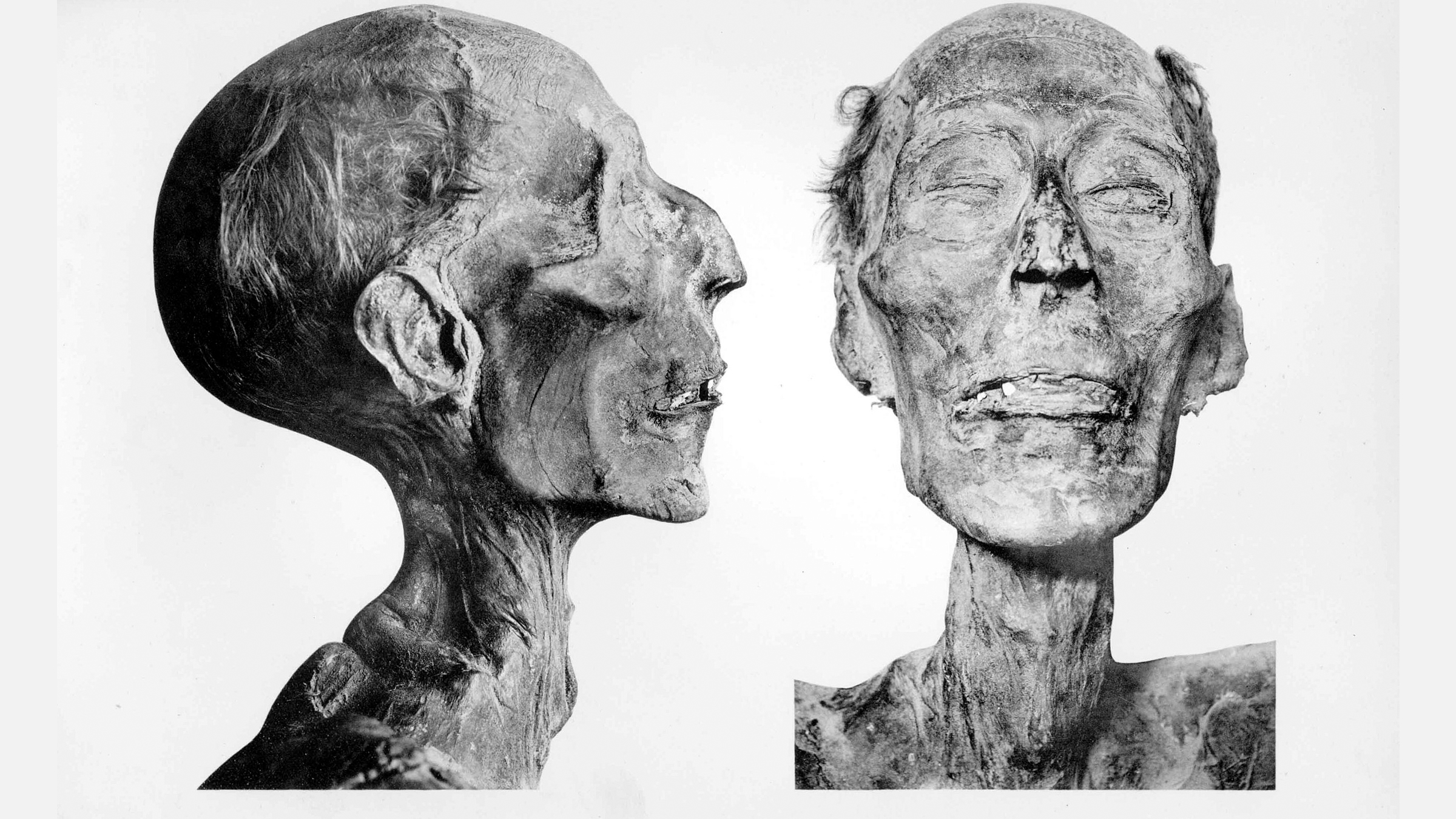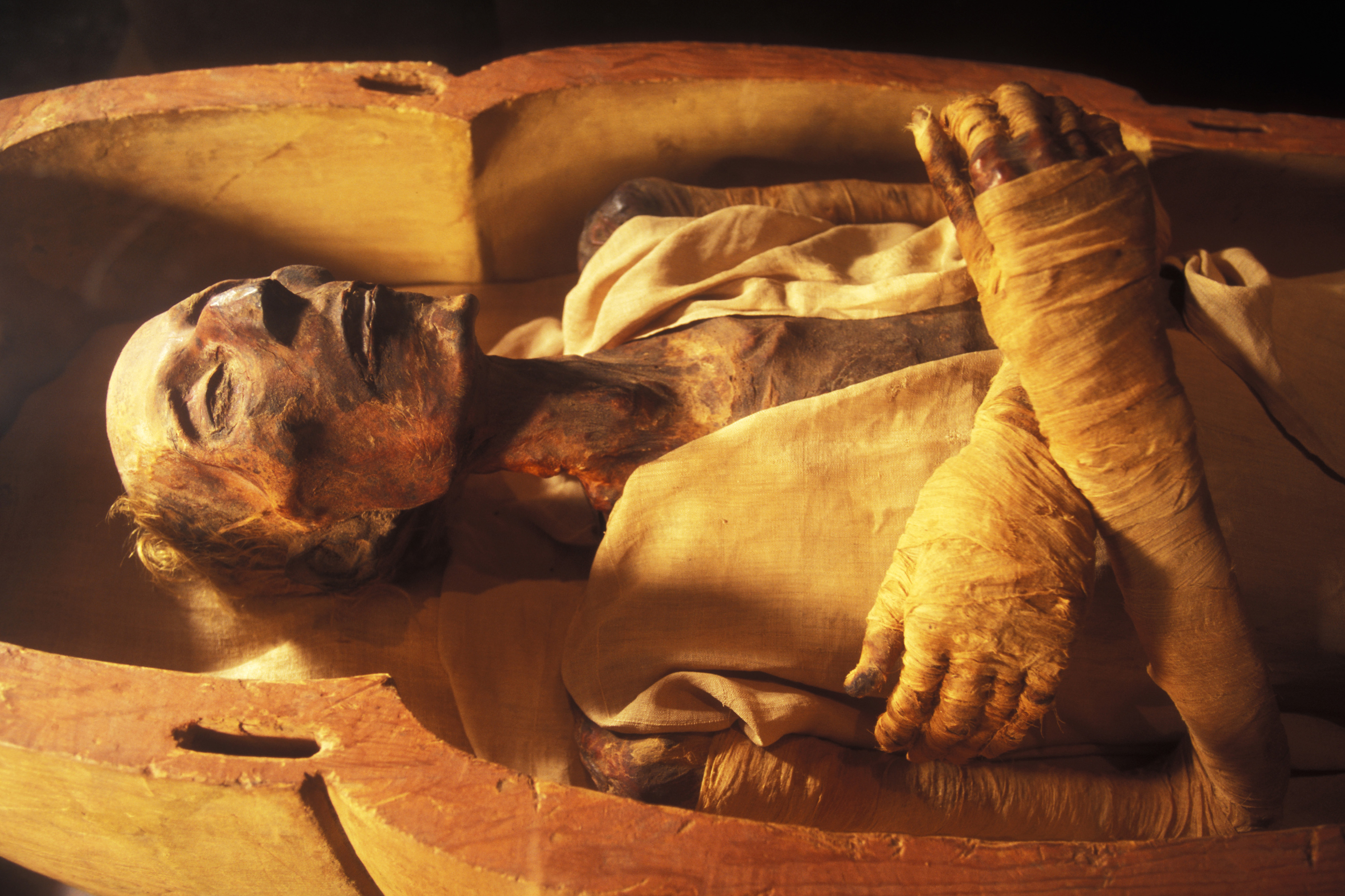Introduction: A Glimpse into the Past
For over 3,200 years, the face of Ramesses II, one of ancient Egypt’s most powerful and long-reigning pharaohs, remained shrouded in mystery. However, thanks to modern scientific advancements, researchers have successfully reconstructed his facial features, offering us an unprecedented glimpse into the past. This groundbreaking achievement brings to life both the aged ruler at the time of his death and the younger, vigorous king in his prime.

The Discovery of Ramesses II’s Mummy
The journey to uncover Ramesses II’s true visage began with the discovery of his mummy in 1881 at Deir el-Bahari, near Luxor. His remains were later moved to the National Museum of Egyptian Civilization in Cairo, where they have been meticulously preserved. Despite his long journey through history, his body provided crucial clues that allowed experts to reconstruct his appearance with remarkable accuracy.
The Science Behind the Reconstruction
Using cutting-edge forensic techniques, scientists conducted high-resolution CT scans of Ramesses II’s skull. These scans generated a detailed 3D model, which forensic experts then used to reconstruct his facial features. The same software employed in modern criminal investigations helped ensure precision in recreating the pharaoh’s face.

Two Faces of Ramesses II: The Elderly Ruler vs. The Young King
- At 90 Years Old: The first reconstruction depicted Ramesses II as he appeared at the time of his death. He was an elderly man with deep wrinkles and sunken features, reflecting the remarkable lifespan he achieved—an impressive feat for an ancient ruler.
- At 45 Years Old: Scientists then digitally reversed time, reconstructing his face as he would have looked in his mid-40s—during the peak of his reign in the 19th Dynasty. This version revealed a strong, commanding presence, with defined features and an aura of regality befitting one of Egypt’s most powerful rulers.
The Significance of This Reconstruction
This facial reconstruction is more than just a scientific achievement—it is a bridge between ancient history and the modern world. It allows us to see Ramesses II not just as a name in history books but as a real person who once walked the grand temples of Egypt, led armies, and shaped an empire.

Conclusion: Bringing History to Life
The reconstruction of Ramesses II’s face stands as a testament to the power of modern science in unraveling the mysteries of the past. By merging archaeology with forensic technology, we can now look into the eyes of a pharaoh who ruled over 3,200 years ago. His legacy endures not just in monumental structures like the temples of Abu Simbel but also in this remarkable recreation that brings him back to life for future generations.

